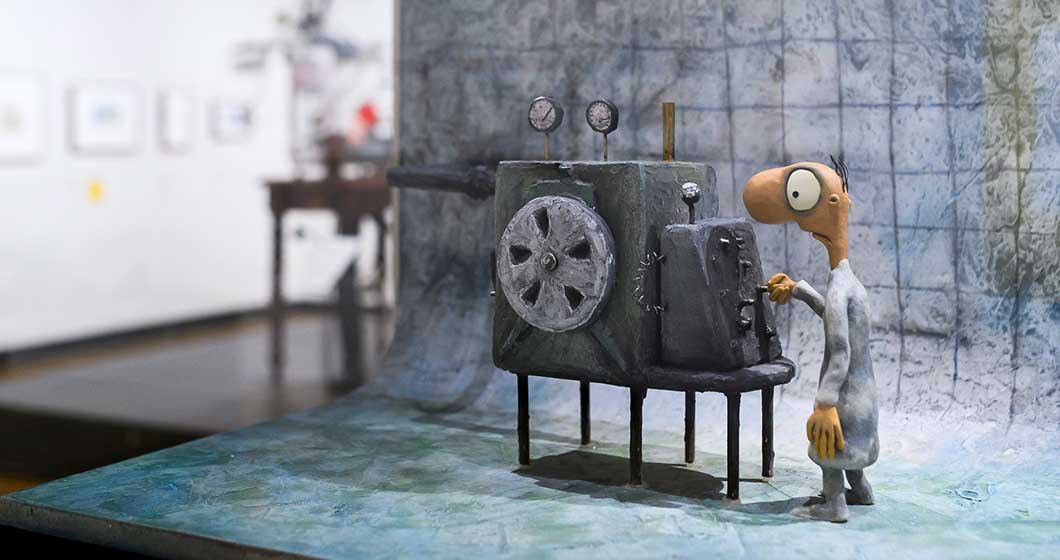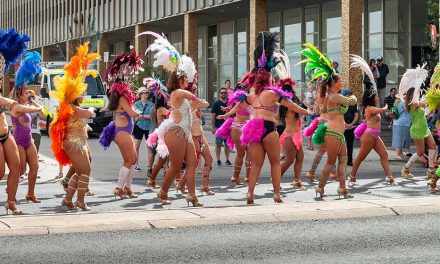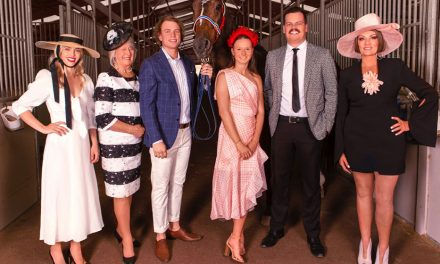Picture an elite society with cigars and cognac in hand living a bohemian lifestyle. Cartoonists were the kings of the industry known for being highly regarded and highly paid. After WWII they even strayed from their employer’s opinions and developed a voice of their own. Not only were they positioned above most on the food chain they became commentators in their own right shaping public opinion….
As you enter the Inked: Australian Cartoons exhibition there is a name registry where visitors sign in and out. In the comment section of the person before me it read: “what an absolutely wonderful exhibition, very impressive,” and so on the comments continued to praise the Inked exhibit we were eagerly waiting to experience.
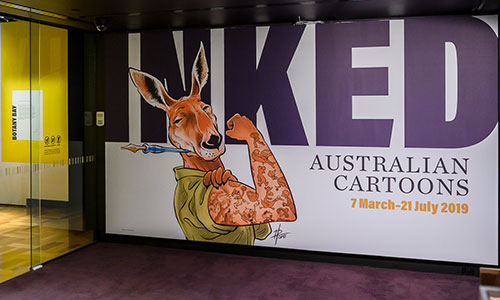
Curated by Dr Guy Hansen, Inked showcases the work of some of Australia’s most famous cartoonists, capturing major moments in Aussie history. From the 135 cartoons on display you are guaranteed to be impressed by each and every work as the chosen cartoons came from a collection of some 14,000. The culling process took around six months to compile those cartoons that stood out from the rest and also those which told the story of both Australian history and cartooning.
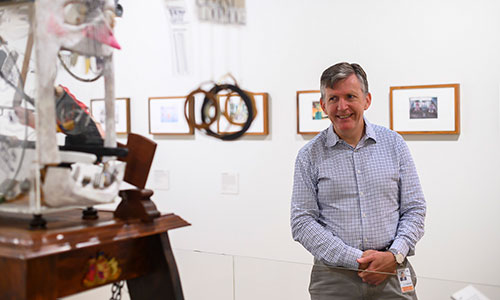
Curator Dr Guy Hansen
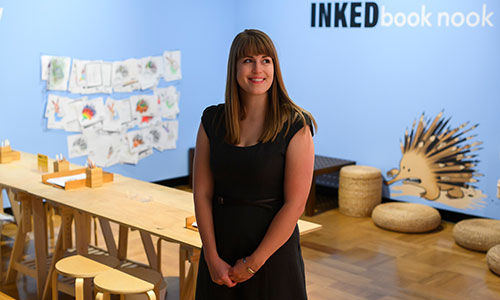
Ros Clarke curated Inked Play featuring Inkie the Echidna
A healthy balance of good craftsmanship, significant moments in time and humorous art fills the display. The selection was driven by the best in each collection, they aren’t definitive statements about history and some messages are hard to gauge but overall the cartoons can tell a story about things that happened over time in a clever and entertaining way.
The invaluable collection is owned by the National Library of Australian and some sculptures have been loaned to compliment the work in a three-dimensional way.
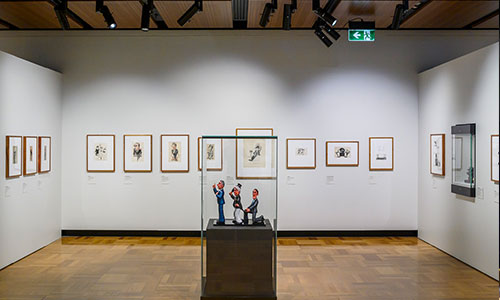
Seeing how cartoon culture has unfolded, was for me, one for the most interesting aspects of the tour. The effects of the 24-hour news cycle compromising journalism and how people are informed has long been a hot topic, yet seeing the profound effect it has had on cartoonists in the industry is something you’ll want to google when you get home.
Visually you can see how a change in the production process played a part in shaping Australia’s cartooning history. The production scale of developing cartoons for print to the present where many illustrations are received by the public digitally has been a big shift. Some cartoonists sunk and others swam when taking the dive from analogue to digital.
Today, satire is expressed in the form of memes and GIF’s but after visiting Inked you’ll soon appreciate that cartooning was the original form of satire – and frankly much more creative than slapping some text over an image. While we are making comparisons, it’s hard to comprehend, but some cartoons of their day even went ‘viral.’ By this I mean newspapers were having reprint copies to please the overwhelming demand. The first cartoon on display called “For gorsake stop laughing: this is serious” is a prime example. A 20th century cartoon by Stan Cross, regarded as ‘the best of its time.’ It depicts Aussie larrikins who tells the story of two working class Aussie’s laughing in the face of adversity. This successful cartoon is where the Stanley Award originated from.
Before becoming newspaper staples, the 1780’s were popular for satirical cartoons which were produced as print and sold to the public in little shops. The First Fleet was familiar with satirical cartooning but were a few years away from a printing press in Australia. This era is known for cartoons of political leaders and often drew on news stories at the time such as Botany Bay. Here you’ll find what is believed to be the earliest cartoon watercolour, painting a picture of the convict uprise in 1804 at Castle Hill.
History of satirical prints transformed into modern cartoons which were published in newspapers and magazine such as Punch Magazine and The Bulletin who featured many Australian cartoonists who became influential in the industry. Work by Phil May is on display which shows a moment in cartooning where artists had to develop cross hatching techniques in order to transcend into the world of printing.
A common figure throughout the exhibit is ‘The little Boy from Manly’ who was a national personification of Australia. He first appeared in 1885 in a cartoon by Livingston Hopkins and was dominate over the next 50 years to help tell a story. Using images instead of words should be something millennials can relate to since the end of gramma and the rise of emojis.
Caricature’s of Prime Ministers were the next big theme in cartooning. See public figures plastered across the wall in a comedic way. War is another strong theme throughout, this era led to illustrators finding their niche as a war cartoonist.
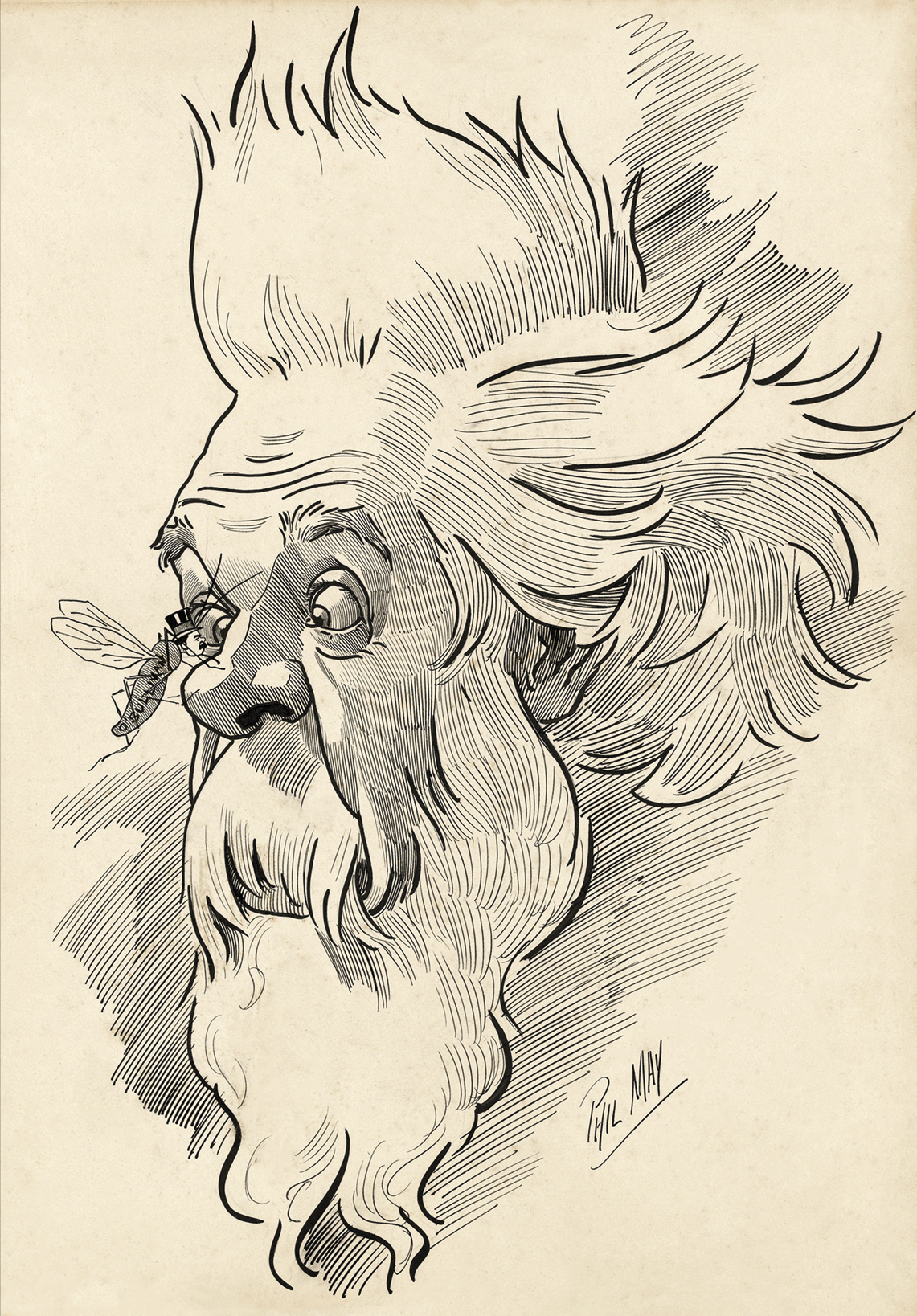
Phil May (1864-1903),The Mosquito Season
After WWII cartoons moved away from gag illustrations and became more expressive of the artist. Australian newspapers were perceived as an institution for cartoonists to say as they wanted through their art.
Towards the end of the exhibition the artwork becomes relatable, mostly because we have lived through the times. Aussie politics proves a fertile ground for cartoonists, producing memorable work which is showcased in the exhibit.
As for the kids, Inkie the echidna’s corner is full of fun and learning and exposes children to interpreting art in an engaging way. The cartoon collections are from artists who use children or families to explore political issues and fairy tales to explore an issue. There’s a book nook, drawing space, interactive wall and tattoos!
Put down your phones, stop sharing memes – at least for an hour or so – and make your way down to the National Library of the Australia to appreciate this OG form of humour.
The exhibition is free and running until 21 July 2019.
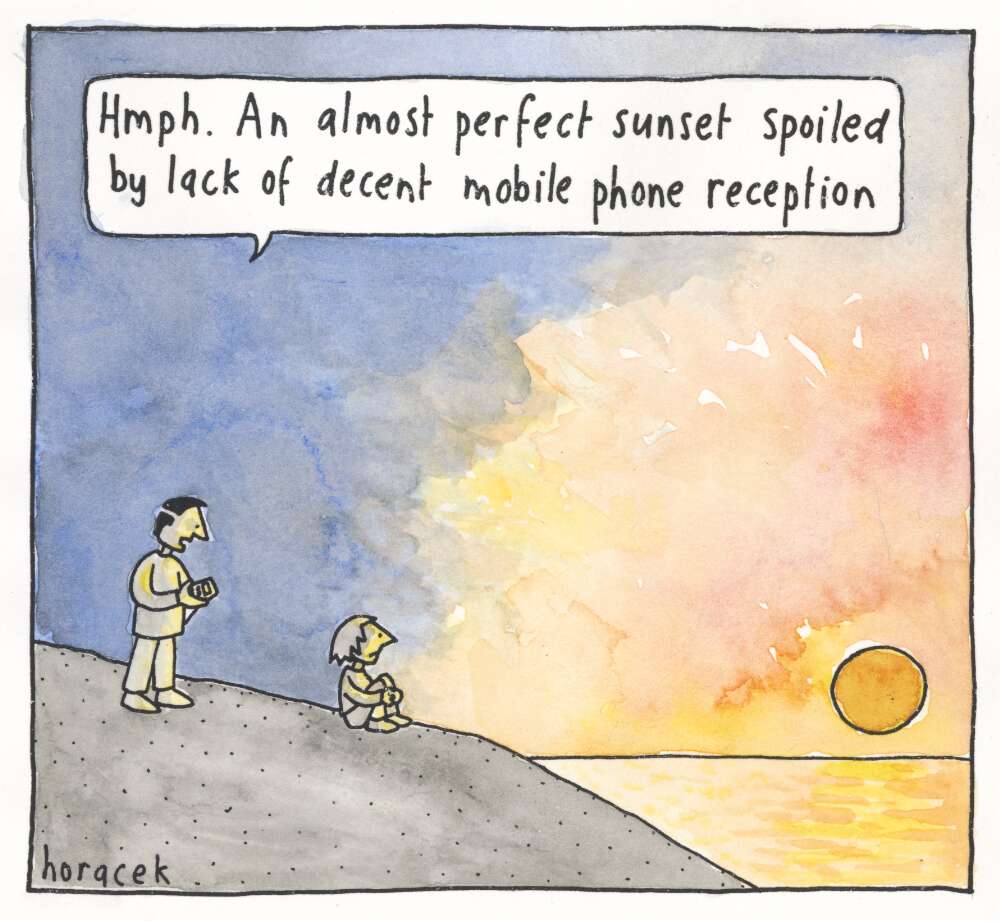
Judy Horacek (b.1961), Perfect Sunset, The Canberra Times.
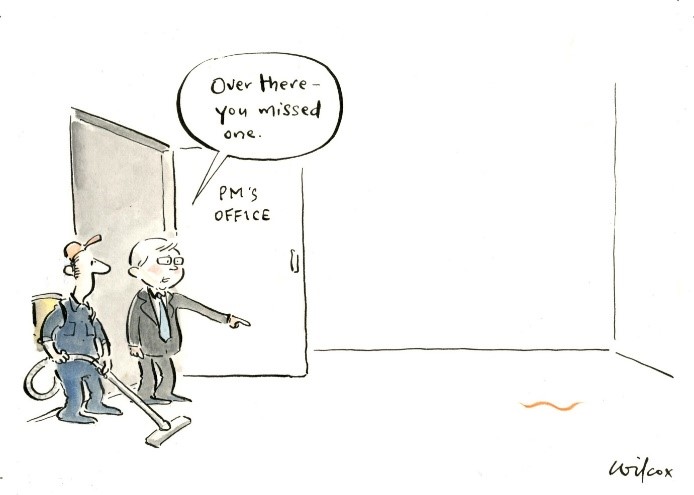
Cathy Wilcox (b.1963), Kevin Cleans Up, The Sydney Morning Herald


